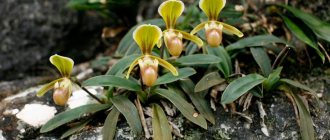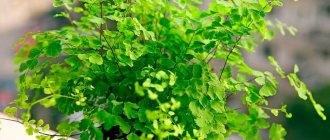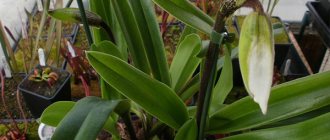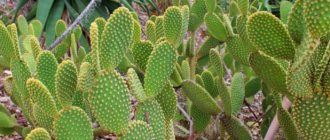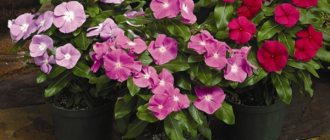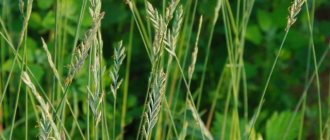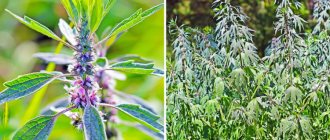08/19/2020 Scientist cat Nature How many types of flowers does each of us know? Most likely, a lot. These are roses, chrysanthemums, daisies, peonies, gladioli and many, many others. However, there are also those that not only delight with their unsurpassed nature, but also surprise with their unusual appearance. For example, Lady's slipper is not exactly a beautiful plant, but it is an extremely interesting and attractive plant. The story is about him.
Slipper grandiflora, or lady's slipper
The first species of this plant were discovered in northeastern India, China and Vietnam. Afterwards the flower came to Europe, and only then to Russia. You can meet this interesting plant in Siberia and the Far East. The lady's slipper belongs to the orchid family and is a perennial herbaceous plant. The genus of this plant dates back more than 30 thousand years. It is impossible to keep an exact count of the varieties of the flower - this is due to the fact that some species are almost completely destroyed for commercial purposes, while others unexpectedly reappear in the wild. It is not for nothing that the large-flowered slipper plant has such a name - the shape of its flower is very reminiscent of a slipper. In addition, the flowers have a bright, attractive color and a very pleasant aroma.
Contraindications
The red shoe is contraindicated for:
- pregnancy and breastfeeding;
- individual intolerance;
- allergic reactions.
Related article: Tenacious Geneva (hairy) - useful properties, description
Attention! Red shoe is a poisonous plant! Shoe treatment can only be started after consulting a doctor. Excessive dosage of medicines prepared on the basis of the lady's slipper can lead to depression of the nervous system.
- Meadow lumbago
Meadow lumbago or dream grass is a perennial herbaceous plant with large beautiful flowers of the Ranunculaceae family. Is poisonous. The lumbago is growing by...
Indian tamarind
Indian tamarind or Indian date is an evergreen tree of the Legume family. Grows in Africa, India, Australia, South Asia, Oceania. IN…
Saffron sativa
Saffron or Crocus sativum is a perennial corm plant of the Iris family. It grows in Central Asia, Azerbaijan, the North Caucasus, Crimea.…
Cedar elfin wood
The dwarf cedar or dwarf pine is a creeping, tree-like evergreen coniferous plant of the Pinaceae family. It grows as an undergrowth in coniferous forests, and...
Types of shoe
There are quite a few species of this plant, but three main ones can be distinguished. The true lady's slipper is a plant with a horizontal rhizome, approximately 50 centimeters in height, leaves shaped like an ellipse, and an original flower. It begins to bloom in July. The next species is the grandiflora slipper. It is widely used to create hybrids, as it has several natural variations. Its flowers are very large, a standard one can reach 10 centimeters in diameter. Their color is usually bright pink, but the shoes can also be white or red.
This variety blooms a little earlier than the first type - in May. Another species is the spotted lady's slipper. Its flower is truly beautiful - white or pink, covered with dark purple spots. This is the rarest large-flowered slipper. The Red Book of the Russian Federation has taken under protection this endangered species.
Description and preparation
The red slipper has a fragile root system, an erect stem up to 45 cm tall and wide leaves with pointed edges. In May-June (once every two years), the slipper blooms with bright red flowers - at the end of the stem there is one flower with large bracts. The shape of the flower resembles a shoe. The stems and leaves of red slipper are used as medicinal raw materials. Harvesting is done during the flowering period of the plant - May-July: the stems and leaves are carefully cut off, trying not to damage the root system, otherwise the shoe will die.
Dry the slipper grass outdoors under a canopy, avoiding direct sunlight, or in an electric dryer at a temperature of 40C.
During the natural drying process, the raw materials need to be turned over every three days. Harvested raw materials are stored in fabric bags or paper bags for 1 year.
Sometimes the roots of the plant are used for medicinal purposes.
What conditions are needed to grow slipper?
Since there are actually a lot of varieties of slippers, there are no uniform conditions for growing this flower. The only indispensable thing is that they should be as close as possible to natural growing conditions. Among the cypripediums there are plants adapted to different growing areas - these are orchids that grow on trees, and plants that are more comfortable on stones and rocks, there are also those that prefer simple humus. Therefore, it is very important to know which species is best suited. The soil in which the shoe is planned to be planted must certainly be moderately alkaline, moist and with good air filtration. These flowers love both sunlight and shaded areas.
But there is one more side that unites different subspecies of the slipper - almost all of them are frost-resistant.
Popular message topics
- Cinema The art of
cinema arose in the 19th century thanks to the Lumière brothers. Famous Frenchmen were able to “revive” photographs and provide people with a new type of entertainment. Film art can be divided into the following types: artistic, - Palm tree
Palm tree is perhaps the most heat-loving tree, which many associate with paradise beaches and hot countries. In any tropical and subtropical countries, near any warm sea you can find this evergreen plant. - Free fall Free
fall is a phenomenon when bodies move and are acted upon by only one force, and that is the force of gravity. On our planet, such a fall will only be conditional. After all, when something falls in the atmosphere, resistance will arise
Care
The large-flowered slipper does not require special care - the plant is considered not at all whimsical. All that is required is regular, moderate watering. It is important to know that under no circumstances should you flood the soil. Just as you should not overdry it - the plant will certainly die in these cases. If the air is very dry, it is better to spray the shoe periodically or try to create conditions that will allow it to maintain moderate humidity. When the shoe blooms, it is worth feeding it. The best complementary food in this case would be mullein infusion. But you can’t overdo it with mineral fertilizers - they contribute to the formation of salts in the soil, which will also destroy the flower. So, we have partially examined the large-flowered slipper - description, types, care.
What else do you need to know about this plant?
How does the slipper reproduce?
The lady's slipper reproduces in two ways - using seeds and vegetatively. No matter how strange it may sound, seed propagation of a plant is quite difficult. Seeds can sprout only under certain conditions, otherwise they will simply dry out without producing a single seedling. Even if it was possible to germinate a microscopic shoe seed, the first flowers will appear on it no earlier than 8-10 years from the date of sowing. Therefore, such germination is practiced only by biologists who are involved in breeding processes. Gardeners prefer to plant a flower by dividing the rhizome; the optimal time for this is August-October.
How to plant a shoe from the root correctly
An orchid (large-flowered slipper) is planted from the root as follows. Part of the rhizome should have several daughter buds. The root is buried in a well-loosened substrate to a depth of no more than 10 centimeters. After this, the substrate is covered with a thin layer of ordinary soil. Important - the layer of substrate above the daughter buds should not be more than 2 centimeters. It cannot be trampled, compacted, or even simply crushed, otherwise the sprouts simply will not break through. So the large-flowered slipper will spend the whole winter, and in the spring it will send out new shoots. And also - during wintering, it is better to insulate the planted flower additionally - this can be dry leaves sprinkled on top or ordinary polystyrene foam (not in pieces, but finely crushed).
Description of the plant
The Orchid family contains a beautiful perennial herbaceous plant with a variegated slipper flower. This is the lady's slipper or lady's slipper. In Russia, the plant was given other names: “Virgin’s boots”, “Cuckoo’s slipper”. The British call the flower “ladies' shoes,” the Americans “moccasins.” Despite its colorful flowering appearance, the plant also has beneficial properties, which is why it is widely used in medicine.
Grandiflora slipper flower
The lady's slipper is common in the Far East, in the eastern regions of Russia, Kazakhstan, and Mongolia. From the main rhizome (short and thick) a stem grows up to 45 cm in height. The plant has basal, sessile (usually four of them) and oval leaves, slightly pointed towards the end and slightly pubescent with white hairs.
In the wild, there are many colors of lady's slipper flowers: from pink, violet-pink to purple and cherry with speckled perianth. The shoe or lip is highly swollen, mottled, most often covered with spots and dots (pictured). Flowering begins in mid-summer (July). After flowering, an untwisted ovary with a fruit-box is formed.
Note that the roots of the large-flowered slipper grow quite slowly - up to 4 millimeters throughout the year. The bud from which the flower is formed is formed long before the flowering process itself, namely 3-5 years.
Today lady's slipper is a cultivated plant, represented by many varieties. The first such “northern” orchid was grown in the St. Petersburg Imperial Botanical Garden.
Beneficial features
We learned what the grandiflora slipper is. Description of the plant, care and planting were considered. However, there are also interesting facts that you need to know about the shoe. The plant contains many useful substances, so slipper infusions prepared according to ancient recipes are widely used for insomnia, childhood fear, mental illness, epilepsy, headaches, and incontinence. Preparing the infusion is quite easy - add a teaspoon of dry herb to 200 mm of boiling water, let it sit for two hours and pass through a sieve. Drink for headaches, bleeding, hernias, and as a diuretic. But for depression and mental disorders, you can prepare another decoction - 10 grams of dry herb per 250 mm of water. Heat all this in a steam bath for 20 minutes. The cooled broth is best stored in the refrigerator.
For children, prepare your own decoction - pour half a teaspoon of dry herb into one glass of boiling water, leave for at least 8 hours, and filter thoroughly. The child is allowed to drink no more than 1/3 glass, always before meals - about 20 minutes before. If the decoction is taken by a person as a course of treatment, then they drink it as follows. 20 days daily, then they give a break of 10 days. The most remarkable thing about taking a folk remedy is the complete absence of contraindications. A decoction of the large-flowered slipper will only be beneficial, without causing absolutely any harm.
Source: fb.ru
nature
